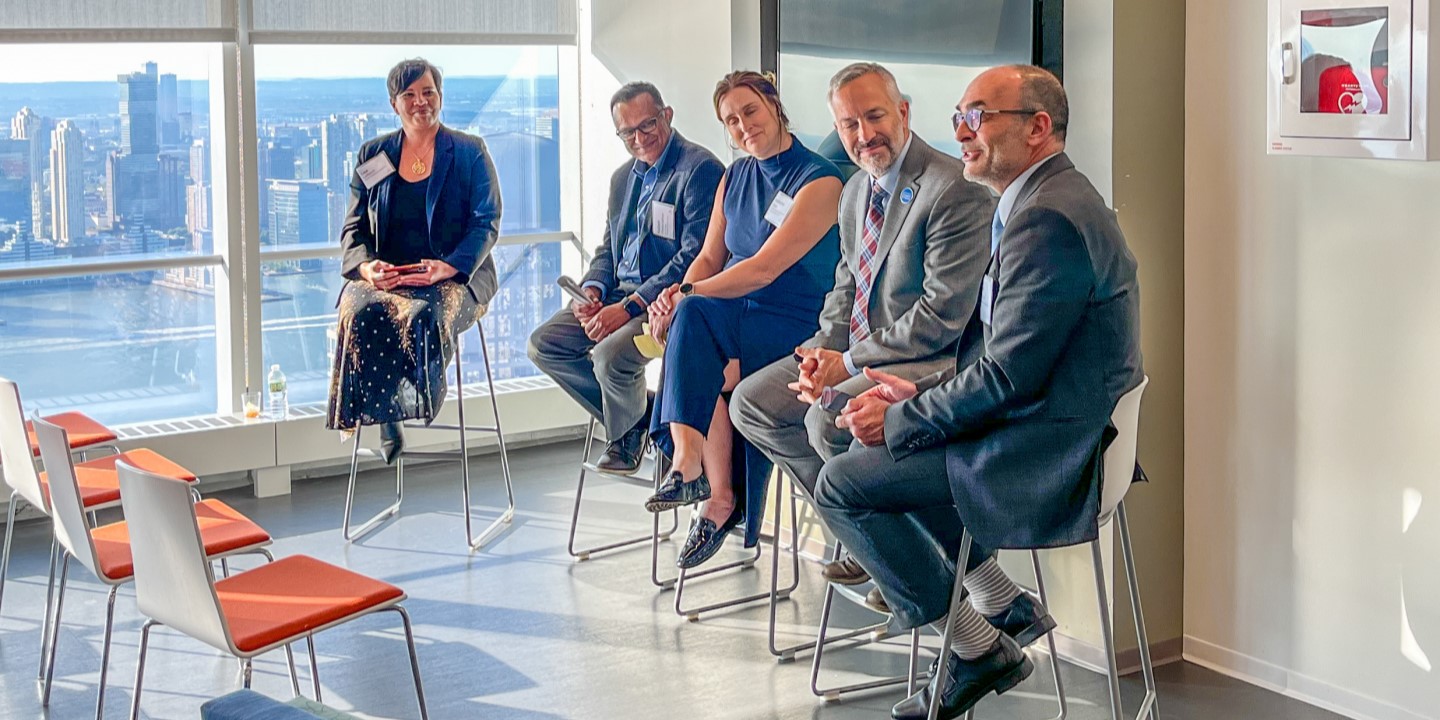Building support for sustainability in the built environment
Climate and EnergyArticleSeptember 26, 2023
The built environment — the human-made surroundings that that include buildings, parks, cities and supporting infrastructure — generates 42% of annual global CO2 emissions, according to Architecture 2030.
Of those total emissions, building operations are responsible for 27% annually, while building and infrastructure materials and construction are responsible for an additional 15% annually.
Given this reality, it’s no wonder that sustainability is a hot topic for construction firms and companies with global property portfolios.
Along with evolving regulatory requirements, climate change is causing operational challenges such as worker safety and timely project delivery. More companies are looking into climate solutions to address these challenges proactively – to ensure regulatory compliance, plan more resilient project sites, protect workers and mitigate future risk for properties.
Zurich Resilience Solutions hosted a panel discussion in its New York office to address these issues during a Climate Week NYC event on September 20. Lisa Leftwich, Head of Sustainability Services, Zurich Resilience Solutions North America moderated the discussion with Katherine N. Blue, ESG and Climate Change Leader, KPMG U.S.; Kailash Viswanathan, Director of Energy, Arch Energy, a division of Consigli Construction; Daniel A. Zarrilli, Special Advisor, Climate and Sustainability, Columbia University; and Amar Rahman, Global Head for Climate Resilience, Zurich Resilience Solutions.
New York City leads the way in reducing greenhouse gas emissions
Zarrilli kicked off the discussion by explaining how New York City is forcing the owners of the largest buildings to make changes to reduce emissions. Under Local Law 97, most buildings over 25,000 square feet will be required to meet new energy efficiency and greenhouse gas emissions limits by 2024, with stricter limits coming into effect in 2030. The goal is to reduce the emissions produced by the city’s largest buildings 40 percent by 2030 and 80 percent by 2050.
“The good news is that the law is working,” Zarrilli said. “For the first compliance period in 2024, 89% of buildings in New York City now already comply. And that's a higher percentage than was originally estimated.”
He added that all eyes are on how New York responds to this sustainability mandate going forward. “Don't be surprised if something like Local Law 97 comes to your city next.”
Insurers step up to help manage climate risk
Rahman talked about the role insurance has historically played in climate resilience, primarily as a risk-transfer vehicle when disaster strikes. Businesses are now looking to insurers to help manage their long-term risks, including both the physical and transition risks associated with climate change.
“With the increasing frequency and intensity of events, customers are realizing that we need to put up multiple lines of defense before we transfer the risk, whether from the construction side or the fixed assets,” he said.
Viswanathan noted that concerns about climate change have been around for 200 years, but it’s only recently that the world has begun to take action.
“From a real estate perspective or a college or university, I think clients and stakeholders are demanding this,” he said. “So, as business leaders, as owners and landlords, you've got to take action today.”
KPMG each year conducts a global survey of the construction industry, including a focus on environmental, social and governance (ESG) issues, Blue said. She said about 54% of survey respondents confirmed they realized substantial benefits — either financially, reputationally or in terms of talent access.
“So, a lot of benefits that I think companies are starting to realize are from the standpoint of focusing on climate-related aspects as well as ESG more broadly,” she said.
At the close of the event, each of the four panelists were asked to provide one piece of advice they would like to leave with the attendees:
Viswanathan: “If cost was not a barrier, I think everyone would start thinking about this. I think we all know it's the right thing to do.”
Blue: “Find a way to measure value on projects and find a way to communicate that value in a way that’s not the standard balance sheet we typically use.”
Zarrilli: “Encourage people on your teams. Encourage your clients to be thinking and talking about this. The polling on this and the research on this is pretty clear that more people care about this and understand the issue than let on.”
Rahman: “Your customers are looking to you. If you could show your customers that you are resilient, that you thought about the future, that puts you ahead of the pack.”
